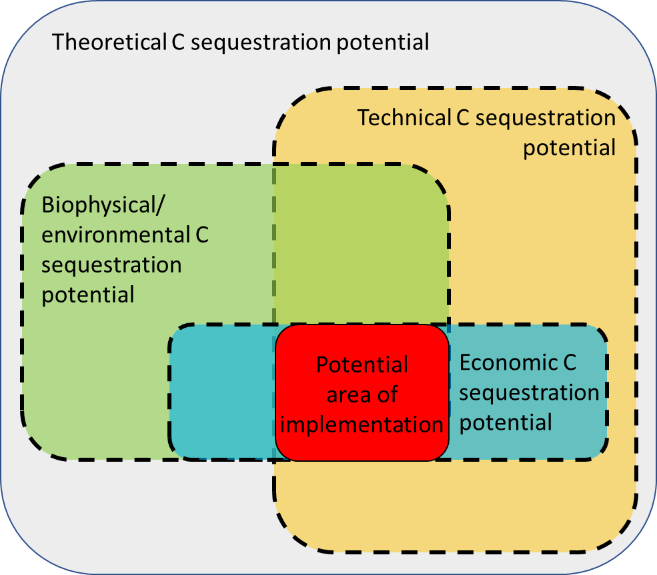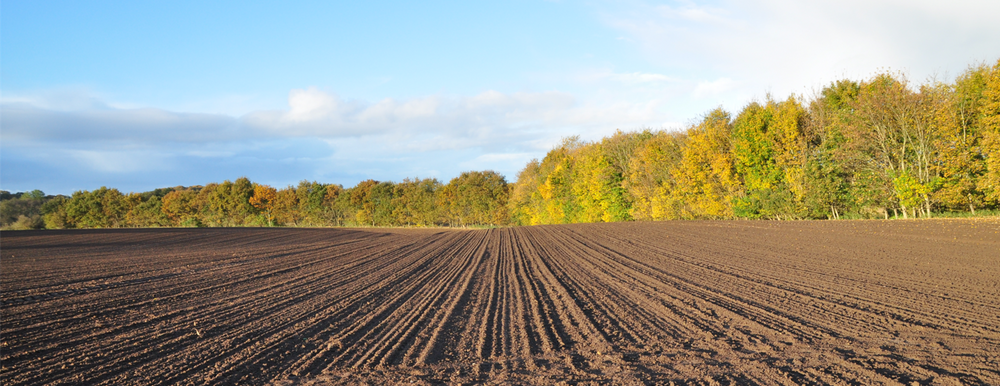European Soil Organic Carbon-sequestration summarised in an interactive map for regional options for climate mitigation.
A database of European long-term field experiments data related to carbon sequestration enables maps and data for agricultural management options. These options take theoretical, biophysical and environmental, technical and economic constraints and potentials into consideration.

Soil carbon sequestration is defined as “the process of transferring CO2 from the atmosphere into the soil of a land unit, through plants, plant residues and other organic solids which are stored or retained in the unit as part of the soil organic matter.” For a natural balance, the sequestrated soil organic carbon should increase the net soil organic carbon storage. In order to do so and to relate carbon sequestration to agricultural management options, the EJP SOIL funded project ‘CarboSeq’ estimates the carbon sequestration potential of European agricultural soils, and will create a database containing European long-term field experiments data related to carbon sequestration.
This database will make it possible to estimate how specific management options can increase soil organic carbon (SOC) stock on a field site as the hedgerows shown in the landscape above. However, for estimation of carbon sequestration potentials it is of significant importance to analyse and precisely define the potential area of implementation for a given carbon sequestration measure. The potential area of implementation is defined as an area where a SOC sequestration measure can be implemented limited by the constraints dictated by theoretical, biophysical/environmental, technical and economic carbon sequestration potentials (Fig. 1).

Figure 1: Different potential areas for implementation of SOC-sequestration measures. The area of implementation starts with the large theoretical area of implementation and by considering biophysical/environmental, technical and economic constraints an economic potential area of implementation can be calculated.
1) Theoretical potential (e.g. all EU cropland) that will be limited by
2) Biophysical/environmental constraints (e.g. climate, soil type, soil texture) (Picture 2)
3) Technical constraints (e.g. irrigation, change of crop rotation, use of cover crops, tilling) and
4) Economic constraints (e.g. cost of implementation, any opportunity cost to agricultural production, price of carbon as traded globally).

Picture 2: Different textures of soils can affect the soil organic C increase after implementation of an agricultural measure (Biophysical/ environmental C sequestration potential). Source: agriculturistmusa.com
In agriculture, it is often overseen that biophysical and environmental constraints can be lifted by technical solutions e.g. water availability by implementing irrigation, soil compaction by tilling, as in the picture below, or adjustment of soil nutrient status by fertilizing, and thus enlarge areas of application.

Picture 3: Reduction of soil compaction through tilling (Technical C sequestration potential). Source: Thünen Institute
A model toolbox for statistical computing in the “R” language will be developed in order to estimate the soil organic C potential of a country. This toolbox can model SOC sequestration potentials on European and national data sets. Side effects will be taken into consideration for example if C sequestration measures increase greenhouse gas emissions such as N2O.
The European SOC-sequestration potential summarised in an interactive map for Europe will be made available from the research results of the CarboSeq project. The SOC-sequestration potential maps and data for different agricultural management options will guide policymakers, advisors and farmers to the most efficient regional specific options to sequester SOC for climate mitigation.
The end-users can select a set of SOC-sequestration measures and receive:
1) A map that illustrates how much and where additional SOC could be sequestered by these measures
2) Information on potential positive / negative economic / environmental side effects of implementing these measures.
The expected outputs and goals of the CarboSeq project align perfectly with the EJP SOIL goals to key societal challenges including climate change, water and future food security through climate-smart sustainable agricultural soil management.
Watch the CarboSeq project trailer video (2 minutes), click here
Watch the full video about the CarboSeq project (10 minutes), click here
For further information:
CarboSeq website: https://ejpsoil.eu/soil-research/carboseq/
Project manager: Axel Don (axel.don@thuenen.de)
Project communication representative: Felix Seidel (felix.seidel@thuenen.de)
